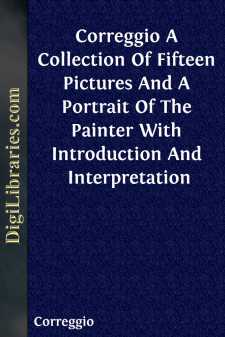Categories
- Antiques & Collectibles 13
- Architecture 36
- Art 48
- Bibles 22
- Biography & Autobiography 813
- Body, Mind & Spirit 142
- Business & Economics 28
- Children's Books 17
- Children's Fiction 14
- Computers 4
- Cooking 94
- Crafts & Hobbies 4
- Drama 346
- Education 46
- Family & Relationships 57
- Fiction 11829
- Games 19
- Gardening 17
- Health & Fitness 34
- History 1377
- House & Home 1
- Humor 147
- Juvenile Fiction 1873
- Juvenile Nonfiction 202
- Language Arts & Disciplines 88
- Law 16
- Literary Collections 686
- Literary Criticism 179
- Mathematics 13
- Medical 41
- Music 40
- Nature 179
- Non-Classifiable 1768
- Performing Arts 7
- Periodicals 1453
- Philosophy 64
- Photography 2
- Poetry 896
- Political Science 203
- Psychology 42
- Reference 154
- Religion 513
- Science 126
- Self-Help 84
- Social Science 81
- Sports & Recreation 34
- Study Aids 3
- Technology & Engineering 59
- Transportation 23
- Travel 463
- True Crime 29
Correggio A Collection Of Fifteen Pictures And A Portrait Of The Painter With Introduction And Interpretation
by: Correggio
Categories:
Description:
Excerpt
INTRODUCTION
I. ON CORREGGIO'S CHARACTER AS AN ARTIST.
The art of Correggio was very justly summed up by his first biographer, Vasari. After pointing out that in the matter of drawing and composition the artist would scarcely have won a reputation, the writer goes on to say: "To Correggio belongs the great praise of having attained the highest point of perfection in coloring, whether his works were executed in oil or in fresco." In another place he writes, "No artist has handled the colors more effectually than himself, nor has any painted with a more charming manner or given a more perfect relief to his figures." Color and chiaroscuro were undoubtedly, as Vasari indicates, the two features of his art in which Correggio achieved his highest triumphs, and if some others had equalled or even surpassed him in the first point, none before him had ever solved so completely the problems of light and shadow.
Not only did he understand how to throw the separate figures of the picture into relief, giving them actual bodily existence, but he mastered as well the disposition of light and shade in the whole composition. To quote Burckhardt, "In Correggio first, chiaroscuro becomes essential to the general expression of a pictorially combined whole; the stream of lights and reflections gives exactly the right expression to the special moment in nature."
The quality of Correggio's artistic temperament was essentially joyous. The beings of his creation delight in life and movement; their faces are wreathed with perpetual smiles. Hence childhood and youth were the painter's favorite subjects. The subtleties of character study did not interest him; and for this reason he failed in representing old age. He was perhaps at his best among that race of sprites which his own imagination invented, creatures without a sense of responsibility, glad merely to be alive.
Tradition says that the temperament of the man himself was exactly the reverse of that of the artist, being timid and melancholy.
This temperament explains why the artist contented himself with so little variety in his types. We need not wonder at the monotony of the Madonna's face. She is happy, and this is all the painter required of her psychically. He took no thought even to make her beautiful: the tribute he offered her was the technical excellence of his art,—the exquisite color with which he painted flesh and drapery, the modulations of light playing over cheek and neck. With hair and hands he took especial pains, and these features often redeem otherwise unattractive figures.
In his predilection for happy subjects Correggio reminds us of Raphael. The two men shrank equally from the painful. But where the Umbrian's ideal of happiness was tranquil and serene, Correggio's was exuberant and ecstatic. Raphael indeed was almost Greek in his sense of repose, while Correggio had a passion for motion. "He divines, knows and paints the finest movements of nervous life," says Burckhardt.
Even when he sought to portray a figure in stable equilibrium, he unwittingly gave it a wavering pose; witness the insecurity of Joseph in the Madonna della Scodella, and of St....


